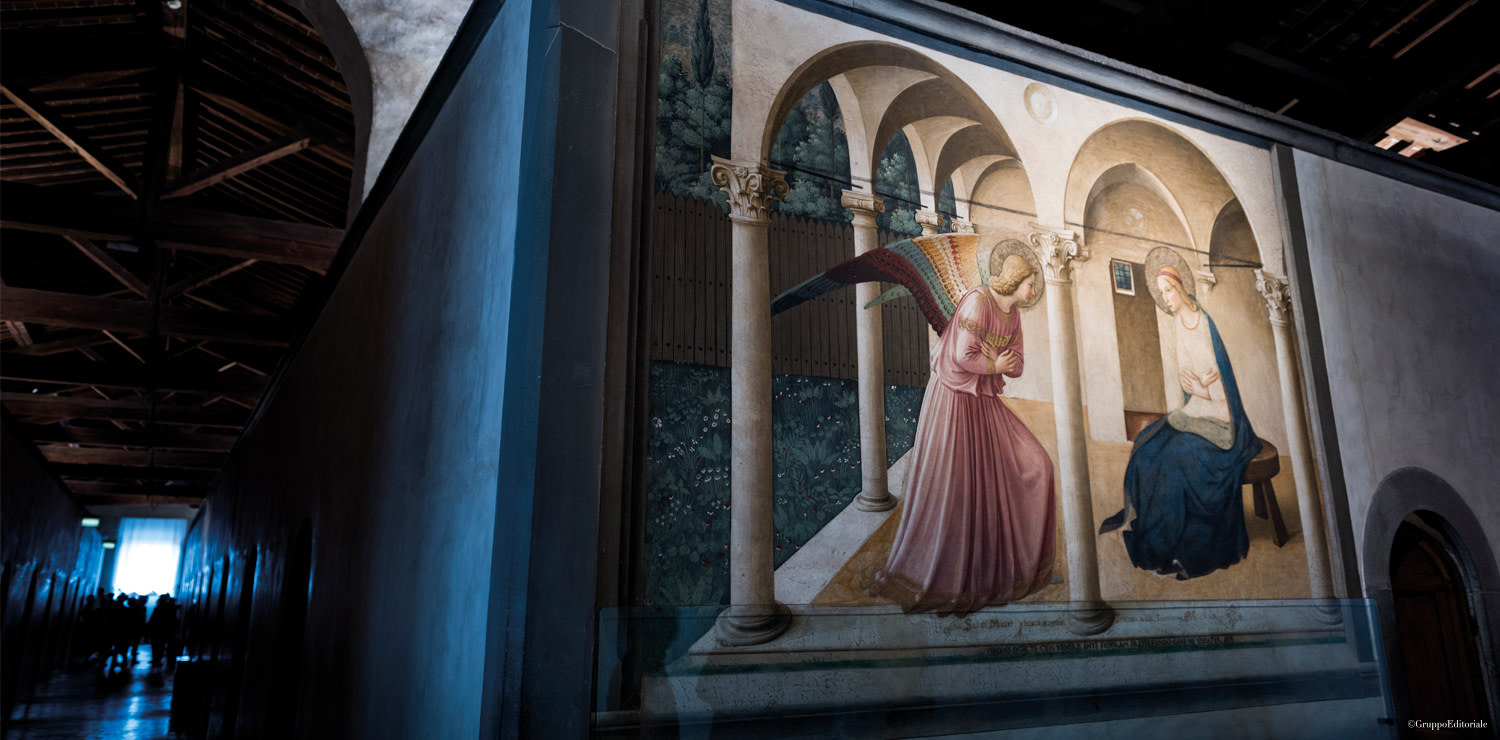The Museum of San Marco in Florence
We visited the Museum of San Marco with the director Marilena Tamassia: an authentic revelation
Crossing over the threshold of the ticket office is like stepping into another dimension, where space and time once again have a value and contribute to creating an idea of beauty that must be adhered to. We’re at the Museum of San Marco, a concrete testament – even if little-known – to a clear and bright Renaissance, a true miracle of our earth that we remember occasionally but whose outlines and entirety we often lose sight of.
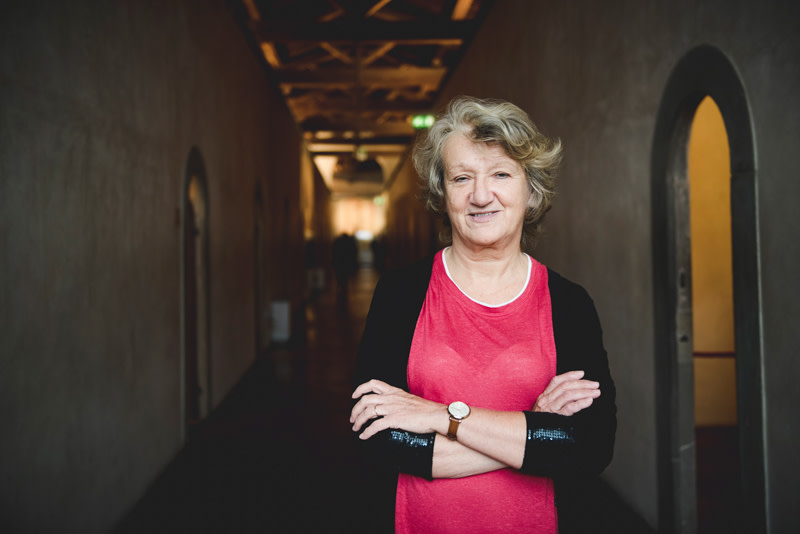 The Director, Marilena Tamassia
The Director, Marilena TamassiaWe’re joined by Marilena Tamassia, the museum’s director for the past 2 years: the kindness in her gaze – closely tied to the pride she feels for belonging to such a place – and the emotion she conveys when standing before every masterpiece is the most difficult thing to describe in words, but it truly demonstrates the building’s prestige. She greets us in the “Sant’Antonino” Cloister, with its harmonious combination of greenery and pietra serena that induces silence. The convent surrounds the space, including the second Cloister, named after San Domenico, which belongs to the part of the convent that today is still home to Dominican friars and is not accessible to the public. The original complex was built for the Sylvestrines prior to the 14th century.
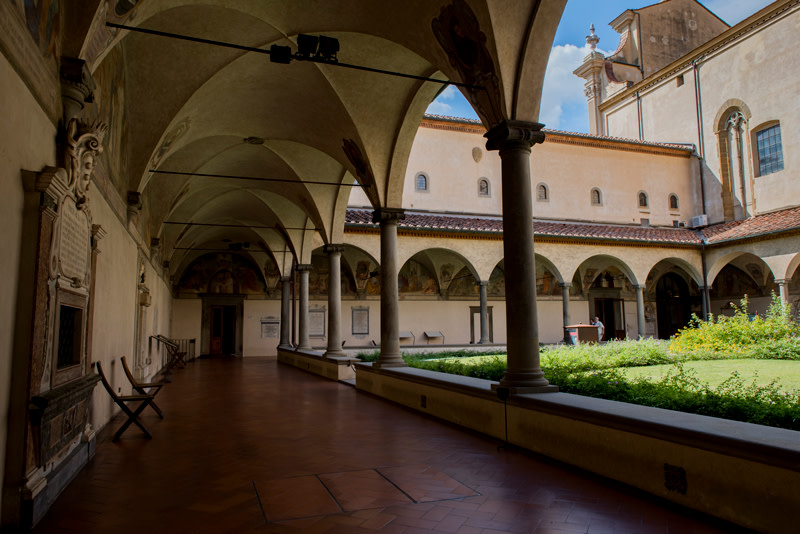 “Sant’Antonino” Cloister
“Sant’Antonino” CloisterIn 1437, Cosimo called for the building to be converted to a Dominican convent and commissioned Michelozzo, the Medici’s favoured architect and considered more adept at genuine renovations than Brunelleschi, to rebuild the convent according to the modern Renaissance style. The consecration took place on the evening of Epiphany, 1443: Cosimo invested a considerable amount of money in renovating the convent, spending more than 40,000 fiorini; Michelozzo paid him back by creating what still today is a veritable architectural masterpiece, not to mention the artworks preserved inside.
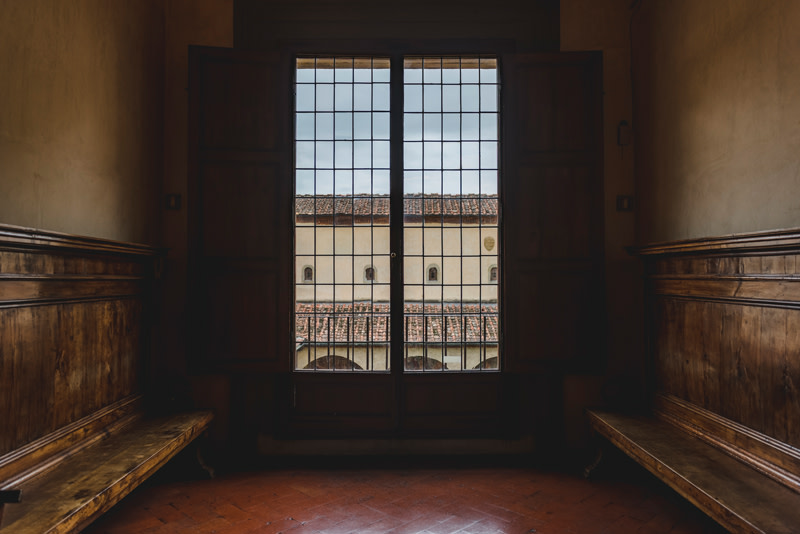 Large window on the second floor of the convent
Large window on the second floor of the conventWith our guide, we stroll through the rooms and cells, opting to see things chronologically. The director reminds us of the absolute authenticity of the museum: a majority of the artworks that we’re looking at were created for this very setting. It is perhaps precisely this that renders San Marco so fascinating: a visit here is almost like a journey back in time, and it begins – it goes without saying – with Fra Angelico. The illustrious Dominican can be found on the ground floor in three places and is the fantastic protagonist of the upstairs floor: his fresco opposite the entrance is evidence of the devotion of Saint Dominic to Christ and stands out on a beautiful blue lapis lazuli; the hospice is also dedicated to the monk painter, where visitors can find a collection of altarpieces and predellas by Fra Angelico, all of which are stunning. The Tabernacle of the Linaioli deserves a few minutes of our attention, commissioned by the Florentine guild for their palace and which celebrates the art of wool and textiles through draperies for Mary, Jesus and the Saints, with an almost three-dimensional perfection.
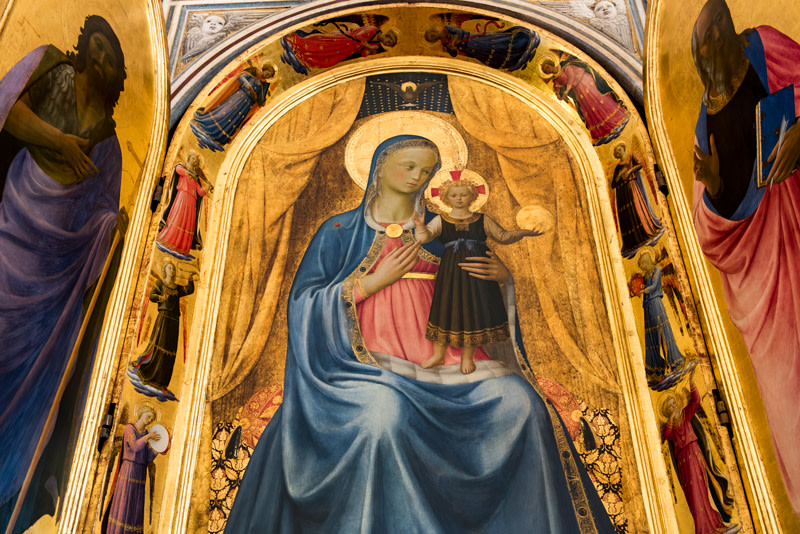 Fra Angelico, Tabernacle of the Linaioli
Fra Angelico, Tabernacle of the Linaioli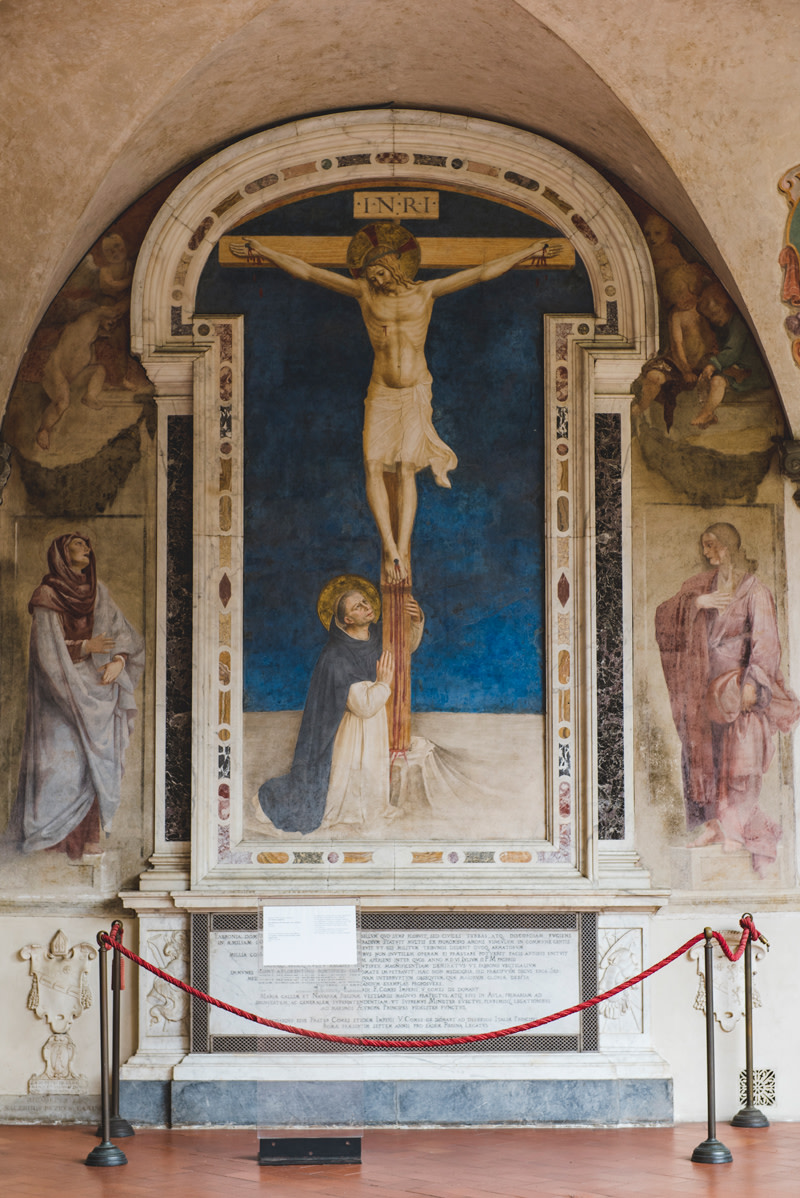 Fra Angelico, Saint Dominic Adoring the Crucifixion ( 1442 ca)
Fra Angelico, Saint Dominic Adoring the Crucifixion ( 1442 ca)In the Chapter House, a crucifixion can be found on the centre wall, with Saints from all the Orders on the right and the Medici family on the left. Here, visitors can get a taste of Fra Angelico’s skill with colour: a palette that is simultaneously strong and vague, as if inspired by a supernatural balance. Opposite the painting is the Piagnona, perhaps the most punished bell in history, guilty of having called upon the local community to join together and save Savonarola from the Medici.
We head to the first floor, a monographic masterpiece by Fra Angelico. We are greeted at the top of the stairs, which leads to the third corridor, by an Annunciation as clean and clear as an arrow: subtle faces, wonderful clothing, colours that form a sequence so perfect to almost seem divine. Continuing along the third corridor, we encounter the Library, where we can once again admire Michelozzo’s skill for rethinking a space with such absolute simplicity, but never banal.
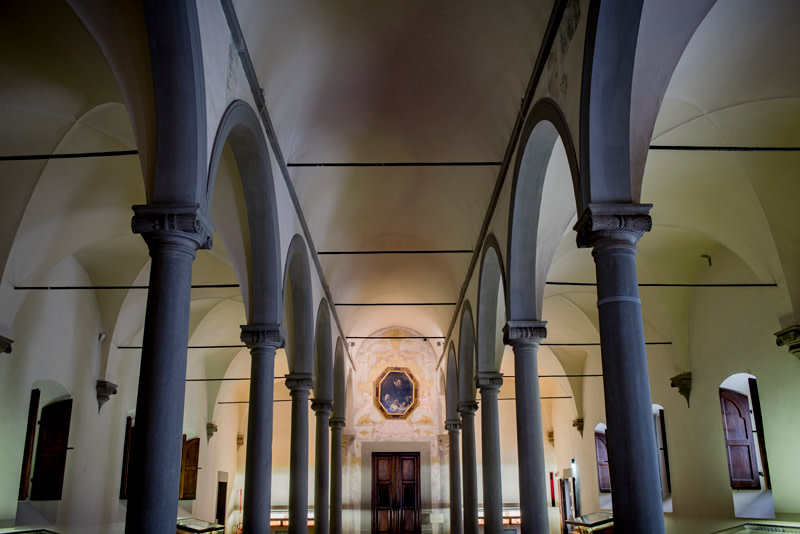 The Library in San Marco was one of the first public libraries in history
The Library in San Marco was one of the first public libraries in history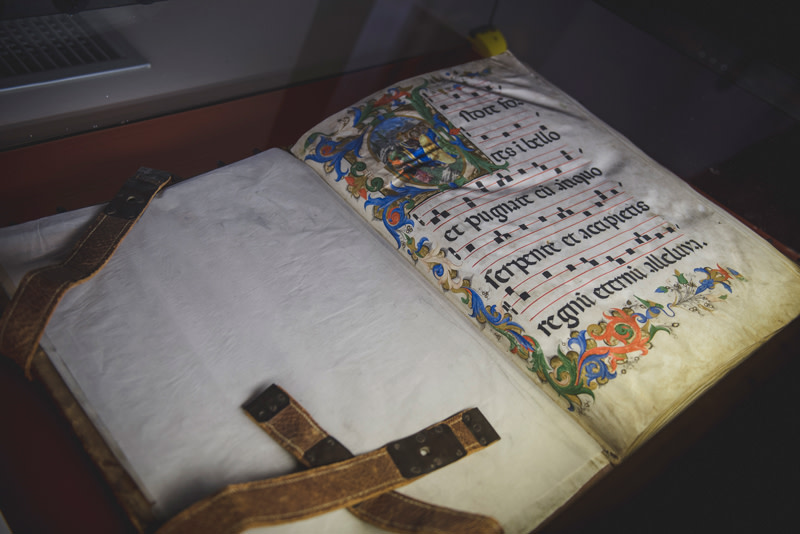 The library commissioned by Cosimo de’ Medici
The library commissioned by Cosimo de’ MediciFurther down are the rooms reserved for Cosimo who, understandably, often came here. To the left of the Annunciation is the corridor reserved for the friars: 21 small cells that each contain, door after door, a stunning fresco. There is no need to describe the beauty of a Christ in a mythical garden; the modernity of a Nativity that revolves around a small hut; or the extraordinary juxtapositions of colour in a Presentation of Jesus at the Temple found in a small niche. There is no use explaining… visit on an autumn afternoon and lose yourself for a few hours. The Corridor for the Novices is a prelude to Savonarola’s rooms – where a beautiful image of piazza del Signoria in the 1500s is preserved – containing more paintings by Fra Angelico. It is here that visitors can see the depiction of 9 methods of Dominican prayer. Returning to the ground floor, we find the rooms dedicated to Fra Bartolomeo, a devout follower of Savonarola and the second monk painter present in the museum; it is he who is behind the beautiful portrait of the greatest heretic in history, conserved here.
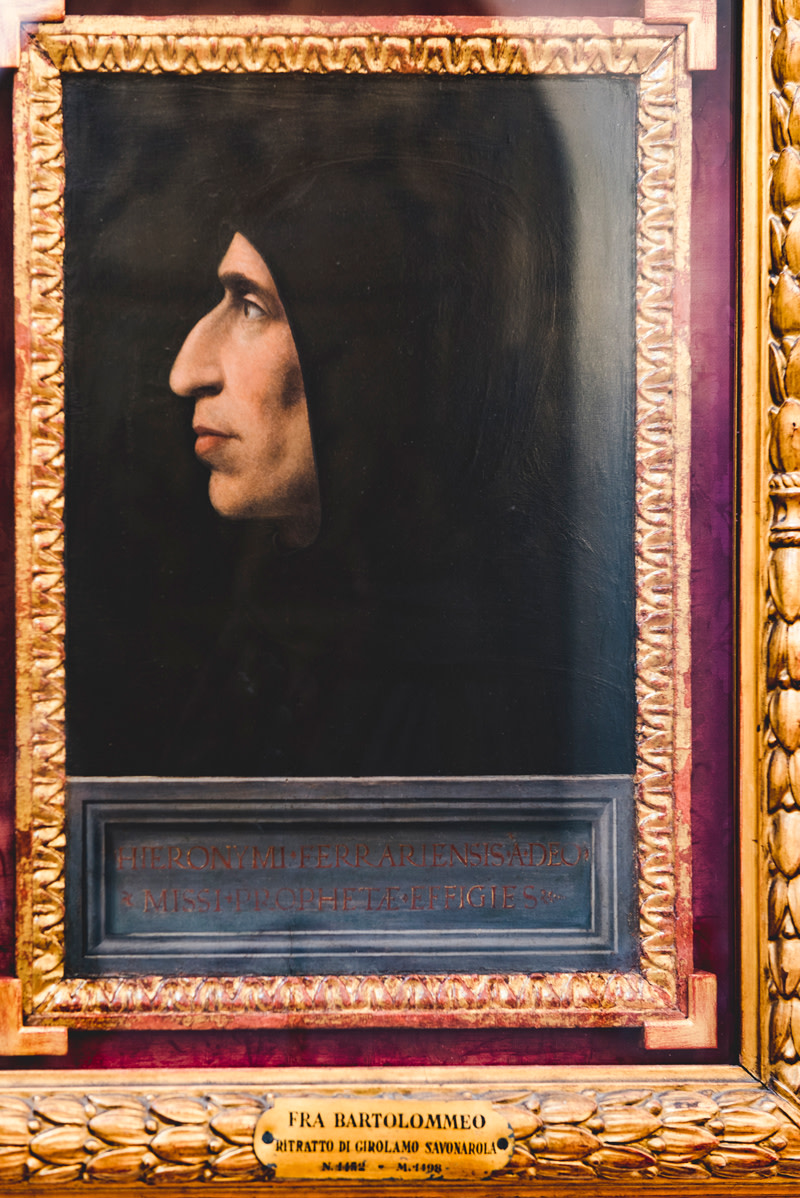 Fra Bartolomeo, portrait of Savonarola
Fra Bartolomeo, portrait of Savonarola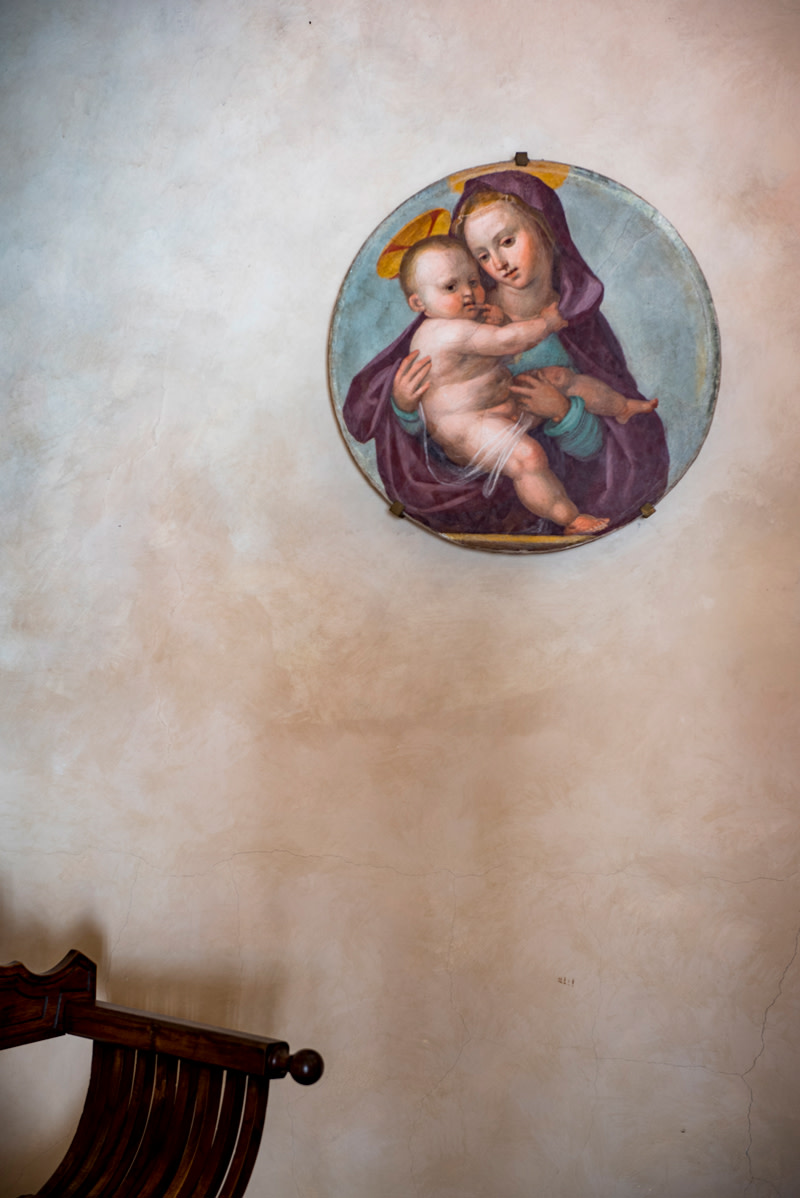 Fra Bartolomeo, Madonna and Child
Fra Bartolomeo, Madonna and ChildFra Bartolomeo has been the subject of recent reassessments – like the nun painter Plautilla Nelli, whose painting can be seen in the large refectory in San Marco – becoming newly appreciated for the subtleness of his faces; the studies that have been undertaken in recent years surely offer remarkable surprises.
The visit comes to an end just as it started, with beauty: Ghirlandaio’s Last Supper, in the small refectory, is a fantastic summary of human emotions. Each face expresses a condition of the soul, speaking to us with clarity as is the artist’s style.
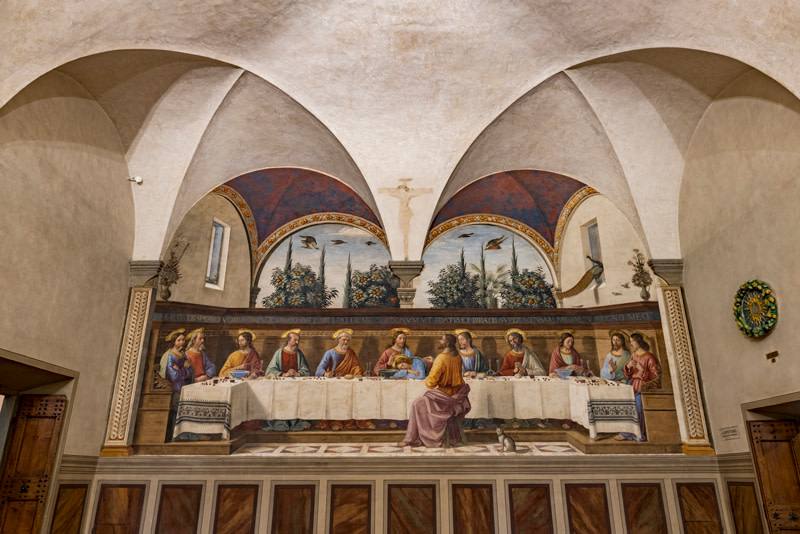 Domenico Ghirlandaio, Last Supper
Domenico Ghirlandaio, Last Supper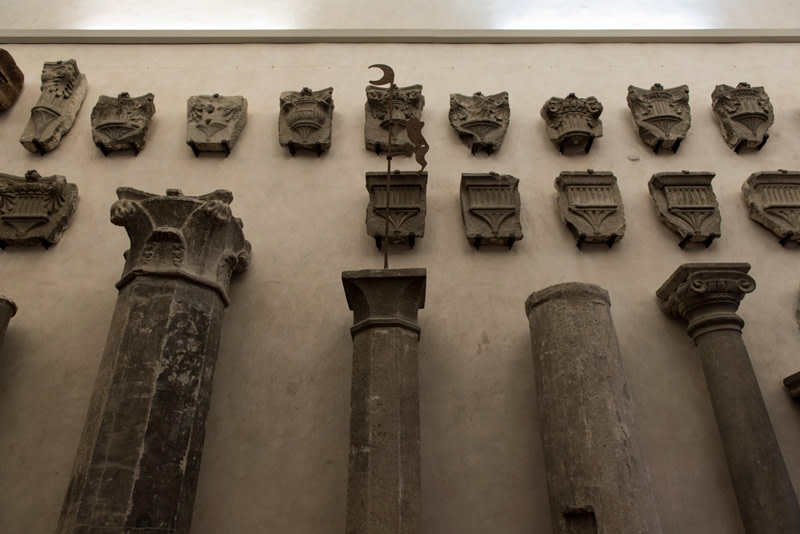 Artefacts saved from the destruction of the old city centre of Florence in the late 19th century
Artefacts saved from the destruction of the old city centre of Florence in the late 19th century Our peaceful and harmonious break reaches the end, and as we head towards the corridor that leads to the exit and holds the relics of the palaces destroyed to prepare Florence as the capital, we thank Marilena Tamassia for having conveyed so deeply the spirit of these rooms and for having restored it in all its glory.






